History of Political Cartoons
Despite many changes over the years, political cartoons have entertained and motivated people of every country and every creed.
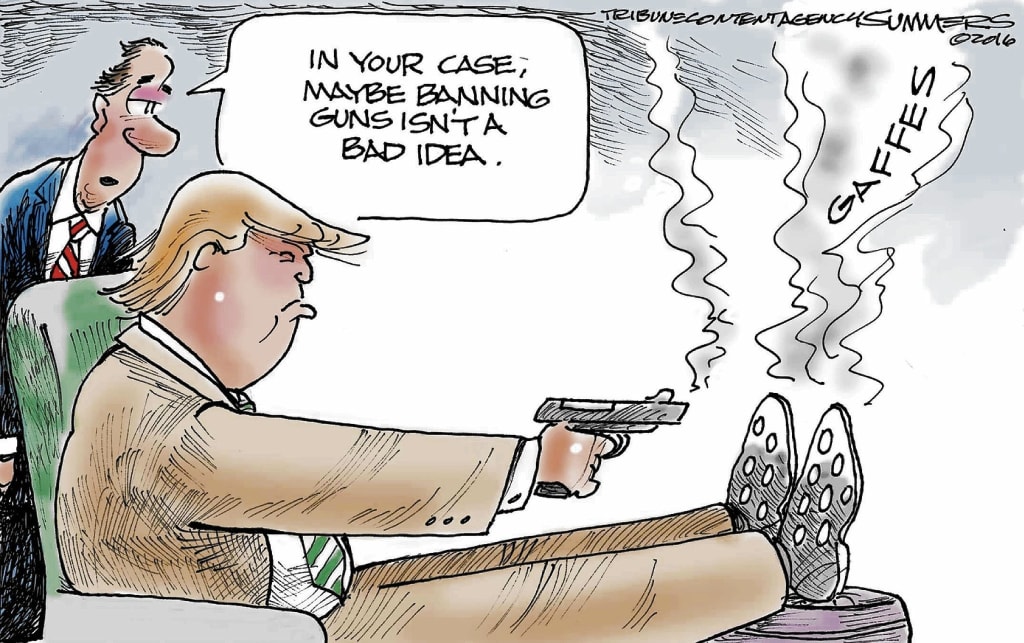
Political cartoons have surged in popularity. With more people talking about politics, and with the nation so deeply divided, it becomes apparent that everyone wants validation for their political opinions. Nothing makes someone feel better than making fun of people we feel are morally backward.
This is not a new phenomenon. The political cartoon has existed for centuries, and, despite many changes over the years and many different targets deserving of criticism, have at once entertained and motivated people of every country and every creed.
Birth of Caricature

Caricature as an art form is a fairly new thing. The first person to experiment with caricature in a way that gained widespread appeal is Leonardo da Vinci. He experimented with physical appearance in order to capture the elements of beauty, and, in the process, used outward appearance to emphasize or relay inner qualities of the personality.
In the years following, Germany made good use of these pieces of artwork in newspapers and pamphlets to make fun of the Catholic Church. Martin Luther's early Protestant Movement put together many woodcuts, such as the ones found in his pamphlet "Passional Christi und Antichristi." The image vilifies the traditional Catholic rites, implying that the Catholic Church was, by its very nature, evil.
The intention here is to discredit the norms of another culture by comparing it to something truly evil. This, by its very nature, is the start of the political satire, boiled down to a formula. Take the establishment, and show it as rotten. The core formula did not change much.
Only the execution, which, over the years, would grow more sophisticated.
American Revolution
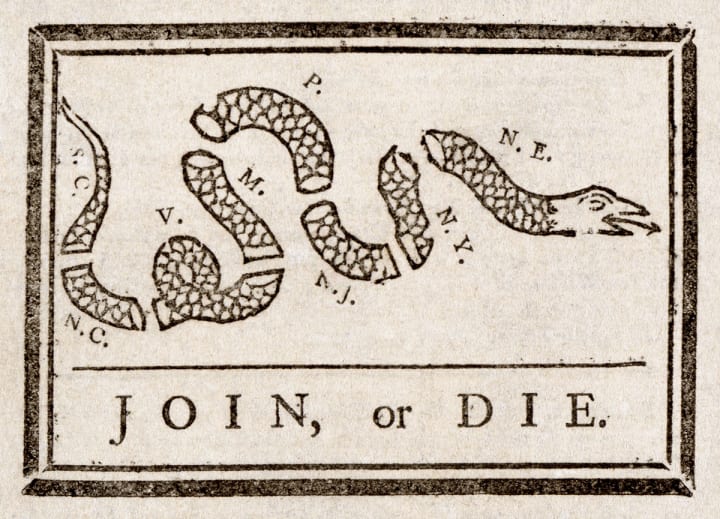
This famous cartoon was designed by Benjamin Franklin at the onset of the French-Indian War. It was his plea for the American Colonies to unify against the Iroquois. This famous cartoon did not demonize the "enemy," so much as criticize the self. This instance of sophisticated cartoon enhances the level of criticism further by directing satire not at the "other," but rather at the "self."
This would trigger a more sophisticated element of the political cartoon that, in coming years, would be very apparent.
But then came the Revolution, and the divide between loyalists and rebels.
Revolutionary War
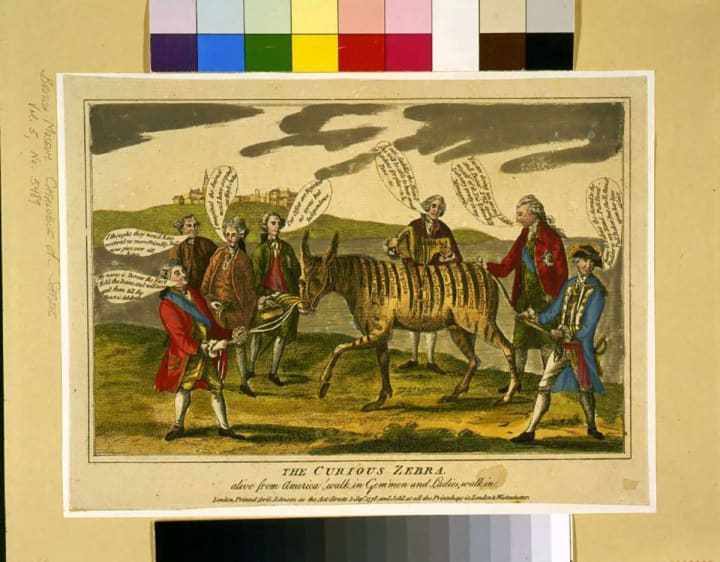
While many American political tracks portrayed either side of the Colonial war positions as silly, the British had a very interesting cartoon called "The Curious Zebra" depicting their own colonies' contrasting opinions on the future of America.
It is clear from this cartoon that the British did not take the American Revolution very seriously, depicting the United Colonies as a zebra being pulled in different directions by men with their own opinions on the matter. One of them is General George Washington.
The attempt here invokes almost a pity for the Colonies, showing a level of nuance up until this point untold. Cartoons around this point tried to make the opposing view point ridiculous, but also a little sad. The implication here is that the Colonies are better off with one person pulling the reins. Presumably, King George.
You can almost hear the artist saying "Aw, you poor Colonies. You need someone strong and sturdy to guide you, not these wish-washy Americans." It is this sense of condescension which makes it so interesting, as it elevates above mere criticism, and more a knowing sense of "We know what's best for you."
This nuance would become a standard from that point on.
Andrew Jackson's Crusade
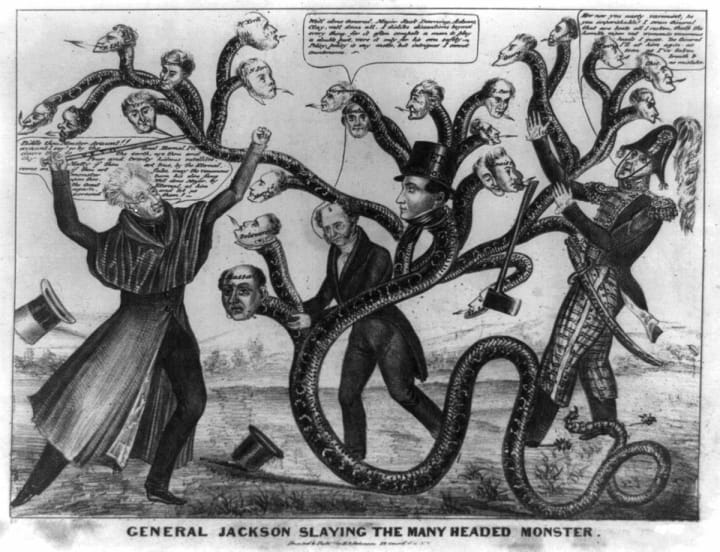
Andrew Jackson is arguably the worst president in American history. James Buchanan is a close second for letting the Civil War break out, and, if Donald Trump ends up as bad as his critics fear, then he'll be a contender for worst as well.
But Jackson did things that proved highly unpopular, both in the context of history and at the time. Killing the National Bank. The Trail of Tears. These rank as some of the most disastrous decisions a president has ever made.
This political cartoon, along with this cartoon of Jackson garbed like an English King, depict the president as a man with a self-motivated duty, ruling like either a king or fabulous hero from myth, despite the reality of the situation being very different.
In this famous cartoon, Jackson slays a many-headed monster populated with human faces. The monster represents many of Jackson's "adversaries" (most notably, the National Bank). The human heads depicted on it represent real people.
While one may be confused into thinking the cartoon is glorifying Andrew Jackson, it actually pokes fun at how Jackson saw himself: as a hero fighting off a great fiend of... everyone else around him. It's intention is not to glorify Jackson, but to depict him as a silly man who thinks himself a great hero, when all he's fighting is... the government itself.
The Rich Stand Atop the Poor
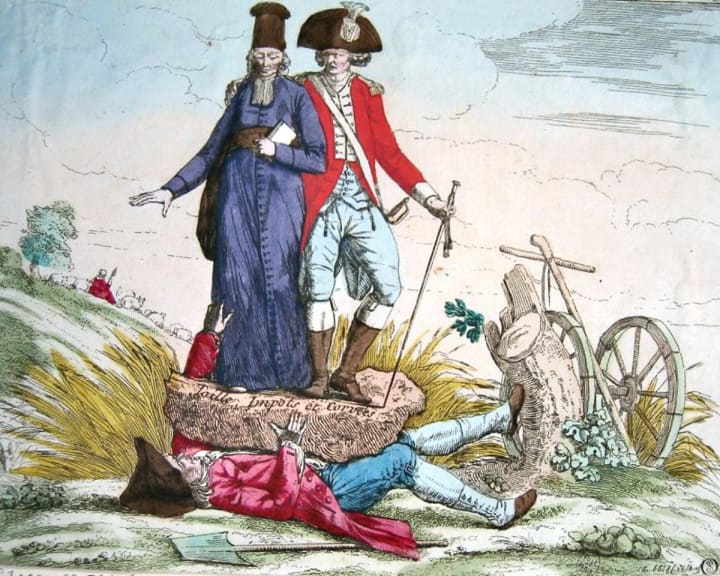
France's political cartoons, though, were a little more direct. And, in many ways, even more brutal.
During the French Revolution, this cartoon appeared, depicting the wealthy standing atop the poor on a slate. This heavy slate is labeled with French. For those who don't speak the language, it's the list of taxes the rich forced on the poor.
This direct cartoon became, in many ways, an inspiration to the political cartoons that followed. It depicted a certain social class unsympathetically--even cruelly--trying upon a vulnerable, pathetic lower class who needed help, whose suffering came without need or necessity.
Racists Make Cartoons, Too

Sadly, many used the platform of the political cartoon to make incredibly racist statements. These cartoons were made to both justify the artist's racism and motivate others to join them.
This horrendous Civil War cartoon depicts America's "future" should the slaves be liberated. White men working (depicted nobly) while black people laze around, doing nothing, with tons of racist statements implying that, without those noble slave owners brutalizing the slaves, they wouldn't work.
The intent is both to scare white men into fearing enslavement under the rule of their slaves, and also to justify the racist institution of slavery to the slave owners. After all, without slave owners whipping black people to bloody ribbons, what would they do? Be elected President or something?
One wonders how the artist of this cartoon would react to former-President Obama, and the reality of how great America stands today.
The incredible, unabashed racism of this cartoon should offend you. It should bother you. This is the inherent hazard with political tracks. While we laugh and smile when we see one we agree with, there are political cartoons that support causes we find absolutely reprehensible.
Cartoons like this are still being made, even now.
Society's Cruelty
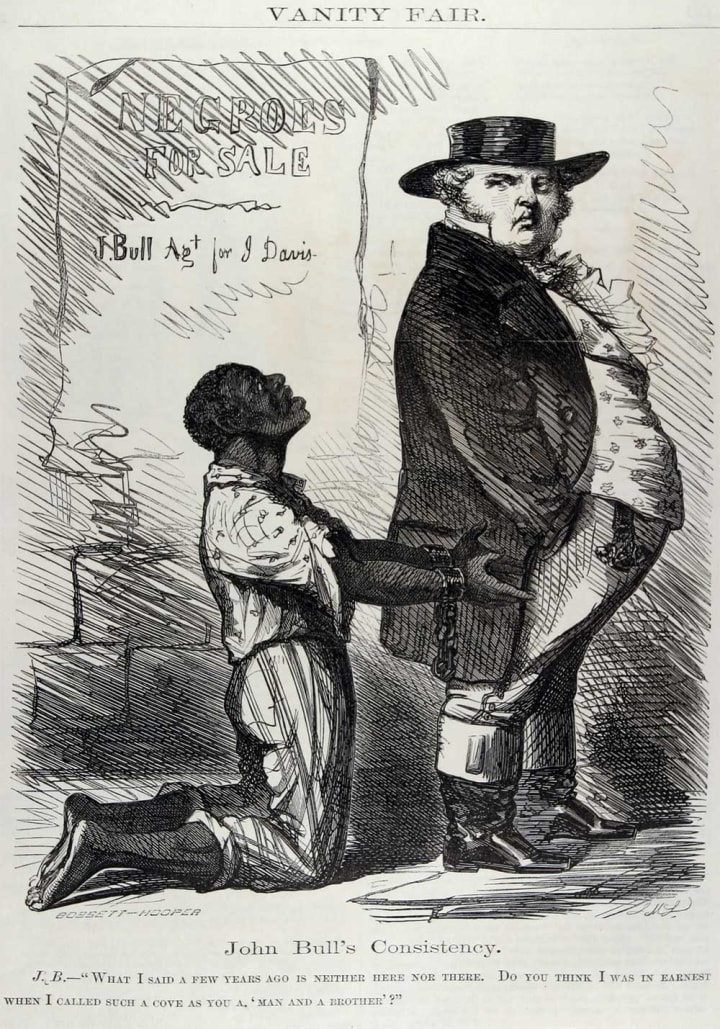
Most of the cartoons up until this point found an adversary to poke fun at. The Noblemen. The President. The Slaves. Some other enemy to say "Hey, can you believe what these people are doing?" The cartoons opposed "them" and showed how "they" were mad.
But following the Emancipation Proclamation, a new enemy became even more apparent, as seen in this cartoon: "us."
This cartoon portrays white men as overfed, rich individuals who won't give a passing glance to a still-shackled black man. The intent is clear: after the fight is over, they won't regard black people as even "human."
This cartoon still successfully paints sympathy toward the individuals lower on the social and economic ladder, but does so in a way that paints people on the same social and economic level as the artist in a negative light. The intention is clear: to point out society's hypocrisy. To show that we must still fight for the rights of every human being. To treat others different from us as people.
League of Nations
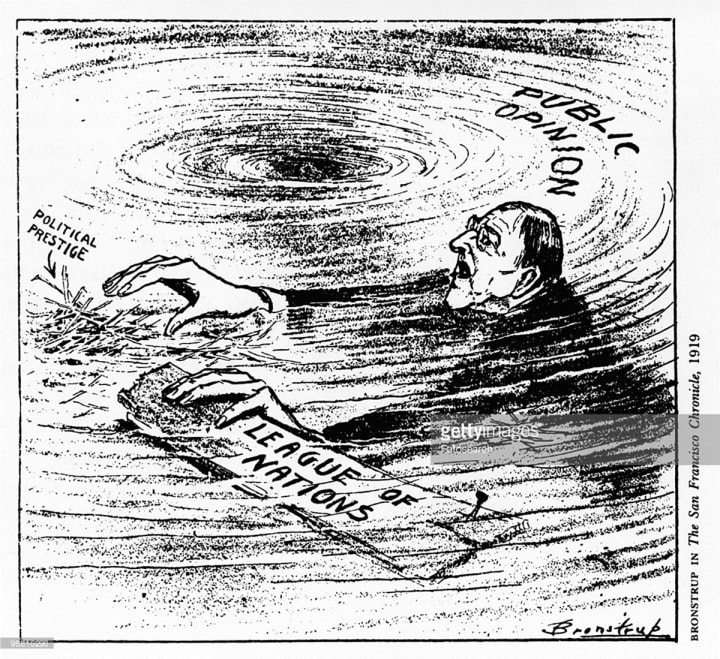
Come the 20th Century, Political Cartoons became wide-spread, thanks in part to the Industrial Revolution making newspapers widespread. World War I had tons of political tracks from all side, often poking fun at the other side, or presenting policies as ridiculous.
Among the most clear examples of political criticism, however, happened when the League of Nations first materialized. Countless cartoons presented the League as a ridiculous, useless administration (which history proved that, yes, it was).
Perhaps most potent of all is this cartoon of Woodrow Wilson clinging to the League without any support behind it. He is swept up in the swirl of public opinion, while the rest of the world sees him as ridiculous.
This cartoon is far simpler than most of the preceding cartoons, with far less word and a more clear message. This defined cartoons in the decades to come: less complication, more complexity. The images become less noisy, but ultimately say far more.
The old adage "less is more" was never truer.
Dr Seuss Takes on Hitler

Everyone knows Dr Seuss. His children books have sold millions throughout the world.
Less known are his political cartoons, of which he made several. This particularly brutal one takes a stab at the American public's indifference to the Nazi threat. It is pointed, and profoundly dark.
Once again, it presents the American public as ridiculous and a danger to those less fortunate. If we are to learn anything from all of this, it is that the political cartoons work best when they are making fun of those in power, in order to spread awareness of the faulty application of that power.
Today

With the proliferation of the internet, political cartoons spread faster than ever. Anyone could create a cartoon, and upload it. This led to a lot of more vulgar and tasteless material becoming wide-spread.
Such as this apt and darkly funny comment about President George W Bush's administration.
The message should be fairly obvious.
The political cartoon has changed over the centuries. Sometimes complicated. Sometimes complex. Sometimes quite simple. Sometimes morally justified. Sometimes morally reprehensible. But one thing always remains the same.
It is on point with its criticism of the establishment.
About the Creator
Glenn Bushinski
Poli Sci professor, closet protestor, and news addict. Definitely House Stark.




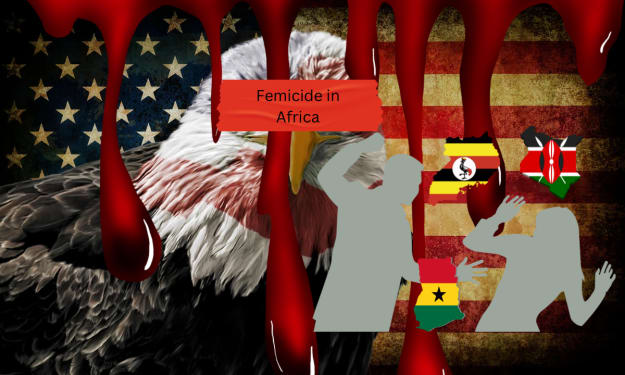

Comments
There are no comments for this story
Be the first to respond and start the conversation.